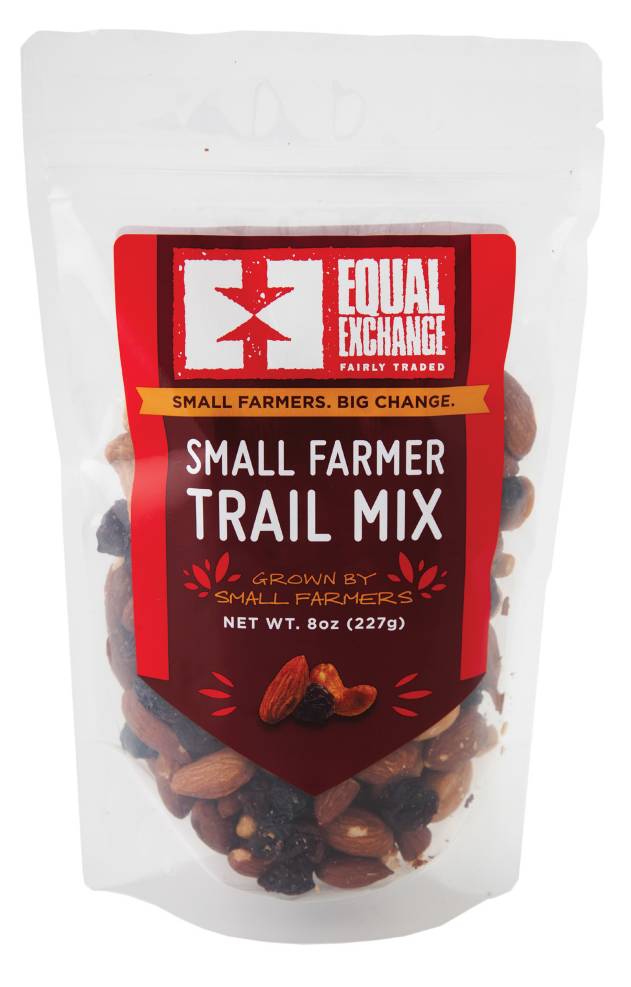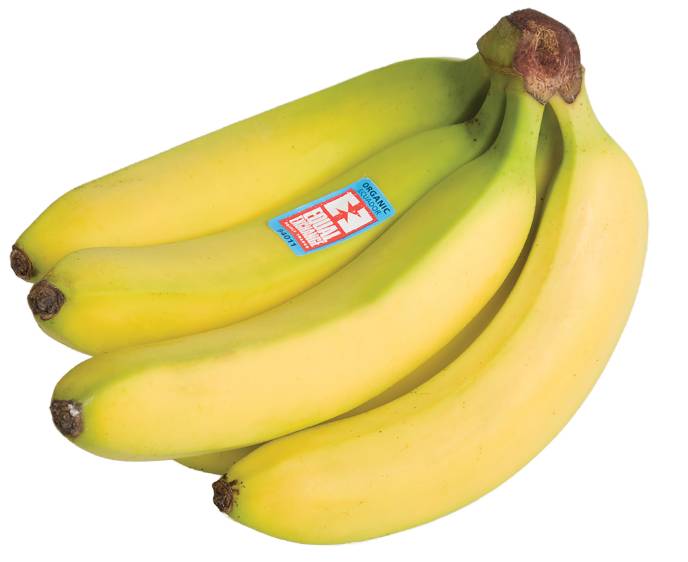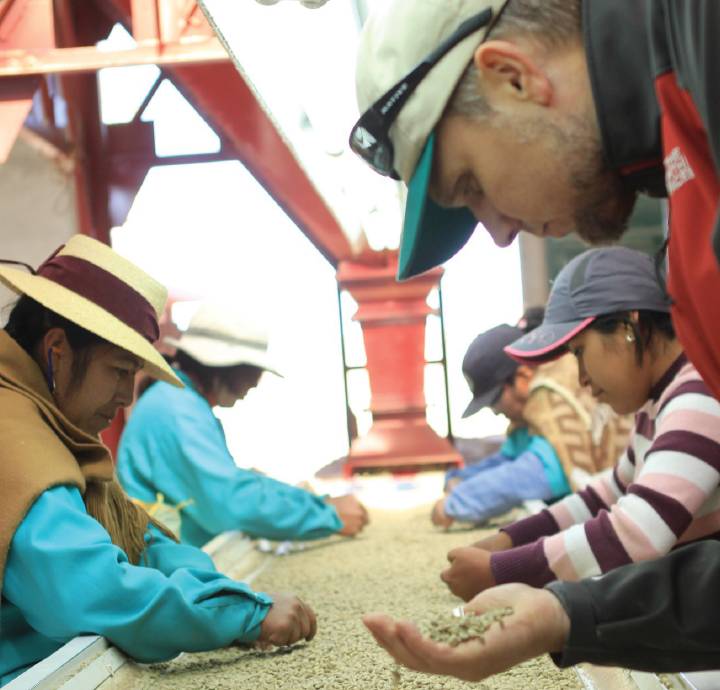
THE GOODS
•Introduced the Fair Trade concept to US grocery stores and restaurants in the late 1980s, starting with coffee.
•98% of products are fairly traded.
•Approximately 95% of products are also certified organic.
•100% employee-owned on a one-person/one-share basis. Every employee from the youngest warehouse worker to the CEO own an equal portion of the business and, accordingly, receive an equal portion of any profits.
•One of the nation’s largest, most successful worker cooperatives.
•Democratically governed by 117 “worker-owners.”
•Mission to serve small-scale farmers and support sustainable farming.

Equal Exchange has an incredible story. Can you tell us a bit of your story and also tell us if the company’s key pillars have changed over the last 28 years?
Rodney North: The creation of Equal Exchange shared something in common with many other pioneering, mission-driven enterprises. The three co-founders (Rink Dickinson, Michael Rozyne, and Jonathan Rosenthal) saw something that badly needed a solution long before society would see it. Despite being way ahead of the curve, they were able to launch and slowly grow the business.
Eventually, dozens and then hundreds of other firms (both tiny startups and Fortune 500 behemoths) jumped into the Fair Trade category. For mission reasons, this was a great victory for Equal Exchange – an affirmation of our model and a great benefit for all the small-scale farmers that finally began to get a better deal. However, it also meant a massive influx of competition that Equal Exchange had not had before.
We also faced the challenge of some brands using the language and imagery of Fair Trade, while actually cutting some corners and not practicing Fair Trade as rigorously as us or other high-bar enterprises. This meant that they had more resources left over for marketing or profits and could lure away conscientious customers while not actually delivering the same benefits to farmers.
Unlike some pioneering, mission-driven brands, Equal Exchange not only survived the new competition, but we actually began to grow faster than ever. A key factor was the growing awareness of Fair Trade, which created opportunities for us to expand into new categories like chocolate and bananas. Like many small, successful, conscientious, privately held brands, we received a constant stream of bids from private equity firms to buy our company. But unlike most (including Odwalla, Honest Tea, and Annie’s), we never entertained those offers. In fact, we included a clause in our bylaws to essentially forbid it. To be more precise, our bylaws state that if Equal Exchange is ever sold, the net proceeds must be donated to another Fair Trade enterprise. There would no “windfall” or “cash-out” for the worker-owners, not even for the co-founders.
The key pillars of Equal Exchange’s mission are:
• Fair Trade with small-scale farmers.
• Support for sustainable farming.
• To operate as a democratically governed worker cooperative.
• Encourage consumers to think about, and care about, small-scale farmers around the world.
Remarkably, these have never changed. In fact, our performance in regard to the pillars has only gotten stronger over the years. For as long as Equal Exchange has had performance metrics (since the late ’90s), one or more of the metrics has always been the quantity and the quality of our Fair Trade sourcing practices. Not only have we consistently increased the volume of our Fair Trade imports each year, but we’ve also expanded the communities we touch by increasing our product lines to include new crops like tea, cocoa, sugar, olive oil, honey, dried fruits and nuts, and even fresh produce (bananas and avocados).
How did Equal Exchange “flip the script” on investors to protect your mission?
RN: Typically, the investors in a business hire “labor.” Those who put up the money call the shots, but at Equal Exchange the labor “hires the capital.” In that sense, we’ve flipped the script.
Every enterprise needs to bring together a wide variety of resources in order to succeed – it needs a whole array of different kinds of human capital, ideas, financial capital (including debt and equity financing), maybe land and/ or office space, management expertise, raw materials, supplied services (e.g. shipping, bookkeeping, design), formal and informal networks, and much more. However, only the people who provide one of these resources (equity financing) enjoy special privileges that none of the other providers receive. They are not only paid for what they provide, but they also get to claim any profits and they get control of the business (or at least the option to exercise control if they wish, depending upon what portion of the total equity they are providing and when they provide it).
At Equal Exchange we do, of course, pay outside investors for the use of their funds (approximately five percent per year), but ownership, voting power, and the right to profits (and the responsibility for losses) lie exclusively with the employees.
One might wonder why investors would accept these terms. For one thing, investors often do not exercise the prerogatives of control (think of the stock you own through your 401k). But more importantly, investors, like other people, have a mix of motivations. Our investors are excited by what Equal Exchange is accomplishing in the world and the way we are changing industries. They appreciate how we fight for farmers, workers, and the environment. And they know we have a strong record of paying dividends. Taken together, we simply offer investors a different, but still attractive mix of incentives, and it’s a mix that allows control to stay in the hands of our 117 worker-owners.
Equal Exchange has strong opinions about Fair Trade USA. Can you tell us more about your position and help us understand what we as consumers need to do to truly support small farmers and food producers to help them thrive?
RN: Over Equal Exchange’s 28-year history (our 29th anniversary will be May 1, 2015), we have seen that when an effort to reform an industry succeeds and takes hold, you can be sure that certain responses and reactions will follow suit. We have seen the following progression with the growth of organic farming, sustainable forestry, cage-free eggs, and Fair Trade:
1st There are pioneers driven by a strong moral or environmental purpose.
2nd Individuals, companies, and/or NGOs try to write rules and definitions to codify the new practices.
3rd Certification organizations are created to audit farmers and/or businesses to verify that they are meeting the new rules.
4th A large business or a group of them create new certification organizations that have similar but less demanding standards, or these businesses try to convince existing certifiers to lower their standards.
5th The original champions of the concept push back against the corporate late-comers and try to defend a high-bar vision.
The Fair Trade movement is now in that fifth stage. It is our strongly held conviction that Fair Trade USA (an NGO that was once the only Fair Trade certifier in the US) has gone too far to accommodate the wishes of large corporations and that it has seriously diluted its certification standards. For the consumer, this means that the products bearing the Fair Trade USA logo may or may not represent authentic Fair Trade.
For example, while you would expect that a Fair Trade product is something grown by a small-scale farmer who was paid a fair price, it could have been sourced from a large plantation. Or you might naturally assume that all the ingredients in a chocolate bar with the Fair Trade USA logo were fairly traded, when in fact, chocolate companies are no longer required to use Fair Trade sugar.
Therefore, we encourage consumers to seek out brands that have demonstrated a commitment to authentic Fair Trade. Consumers can also look for two newer certifications from Fair Trade America and the Small Producer’s Symbol, which have been launched to challenge Fair Trade USA.
Why did the three founders of Equal Exchange choose to structure the business as a for-profit worker cooperative?
RN: In choosing this structure, the founders were hoping to achieve many things at once. For starters, they wanted to show that commerce could be conducted in a different, more humane manner – that it didn’t have to be a dog-eat-dog situation. Had they incorporated as a non-profit, any success they subsequently had would have had no value as a lesson or as an example to business owners, leaders, or industry observers. Their example would have been dismissed. So, Equal Exchange chose to be a for-profit.
The founders also wanted the mission to be entrusted to those who were actually doing the work – those who were closest to it – which meant the business should be owned by and accountable to the employees. Plus, they believed in equality and economic democracy, as is practiced by the 40 farmer cooperatives that supply Equal Exchange. Put all those elements together and you get a worker cooperative.


“OUR INVESTORS ARE EXCITED BY WHAT EQUAL EXCHANGE IS ACCOMPLISHING IN THE WORLD AND THE WAY WE ARE CHANGING INDUSTRIES.”
What advice would you give to young entrepreneurs hoping to start mission-driven businesses?
RN: Start thinking immediately about questions like: How can we be sure that we never drift away from our mission or are pulled away from it for financial reasons? (The co-op model can often be the answer.)
What happens if – for whatever reason – one day I am no longer running this enterprise? How can I make sure that it will continue to operate according to its original ideals?
Don’t put off solving some of these challenges until “tomorrow” or “later.” If you do, it will be too late. Your course will already be set and the opportunity to put the necessary protections, structures, or bylaws in place will have passed.
Can you speak to some of the challenges of being employee-owned and the benefits you have seen as a direct result?
CHALLENGES:
• You must hire very, very carefully because you are not simply hiring a salesperson, accountant, or warehouse worker, but someone who will probably become a fellow owner with a vote in key company matters.
• You cannot raise capital the same way as most small businesses or startups since you cannot cede control of the business (even partially) to investors. Therefore, you will probably have to search harder to find investors who will accept your terms.
• Because 99.99 percent of American workers have never worked in a worker co-op and have no experience with democracy in the workplace, you have to create a robust, in-house education and training program to prepare employees for the responsibilities and unique demands of employee-ownership and employee-governance.
BENEFITS:
• You have a much, much better chance of protecting the company’s mission and ideals in perpetuity.
• There is very strong employee buy-in and enthusiasm for both the company’s success and its mission (since employee control is an inherent part of the firm’s mission).
• Employees’ interests are strongly aligned with the company’s interests.
• There is much lower staff turnover.
• The co-op model consistently generates enthusiasm and respect among our customer base, the public, vendors, investors (if you have the right type), and even the media.





